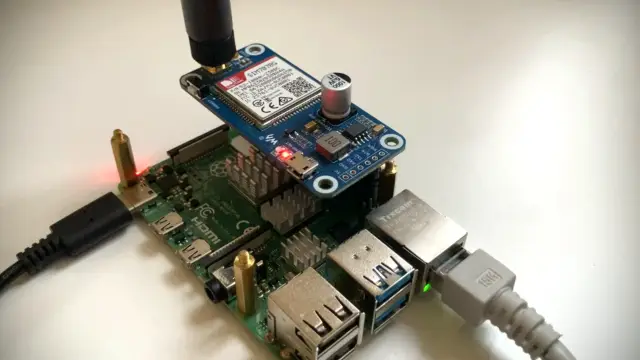Tag: Raspberrypi
We took a closer look at the “Waveshare SIM7070G Cat-M/NB-IoT/GPRS HAT” for the Raspberry Pi and put it into operation. We uncovered various pitfalls and describe below how we set up the NB-IoT modem to connect one of our #AMPS nodes to the internet.
- Hardware:
- Raspberry Pi 4 B
- Mobilfunk-HAT: Waveshare SIM7070G Cat-M/NB-IoT/GPRS HAT
- SIM-Karte: Telekom M2M
- Software: Raspbian 12 “Bookworm”

Yesterday, while completing some of our AMPS units with display and Qt application, we encountered an error that caused the application to fail to launch correctly and crash in rare cases. The error looks like this:
Mikroelektronika (MikroE) from Serbia offers within its “Click” ecosystem numerous function modules that can be operated on microcontrollers. One of them is the “CAN SPI Click 3.3V” CAN controller module, which can be connected via the standardized “MikroBus” interface or SPI. To make the connection to a Raspberry Pi 4 work, we added the “Pi 4 Click Shield”.
In this post we will briefly explain how we got the CAN module working in conjunction with the Raspberry Pi 4.
On our odyssey in search of a 5G cellular modem, we have tried several modems from different manufacturers. Unfortunately, the commissioning was not always successful. Sometimes the driver support in the Linux kernel was completely missing - sometimes the control via NetworkManager / ModemManager was buggy or not possible at all.
Easy commissioning and stable operation are important to us. Since we do not want to use the modems on only a few devices, a manual adaptation of the Linux kernel is usually out of the question for us. The effort involved is too great and the consequences for the further life cycle of a product are too unclear. Therefore, the operating system - often a Raspberry Pi OS - should be used in its factory state and without major adjustments, if possible.
Two modems have emerged for us that work “out of the box” in combination with the current Raspberry Pi OS on Debian 11 “Bullseye” basis (kernel 6.1):